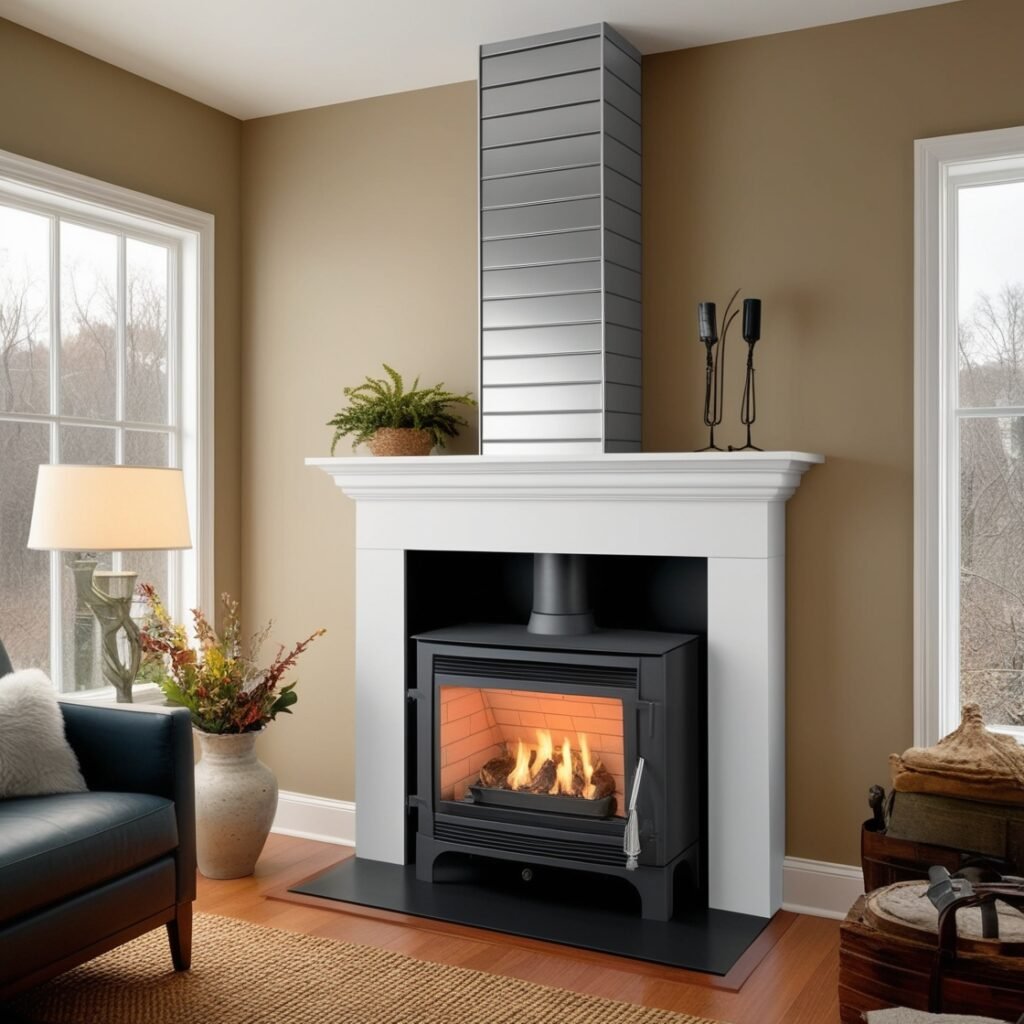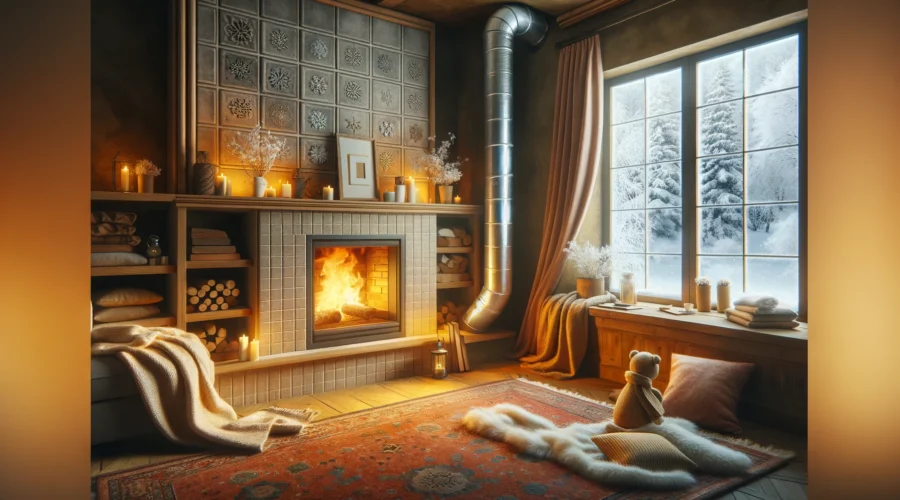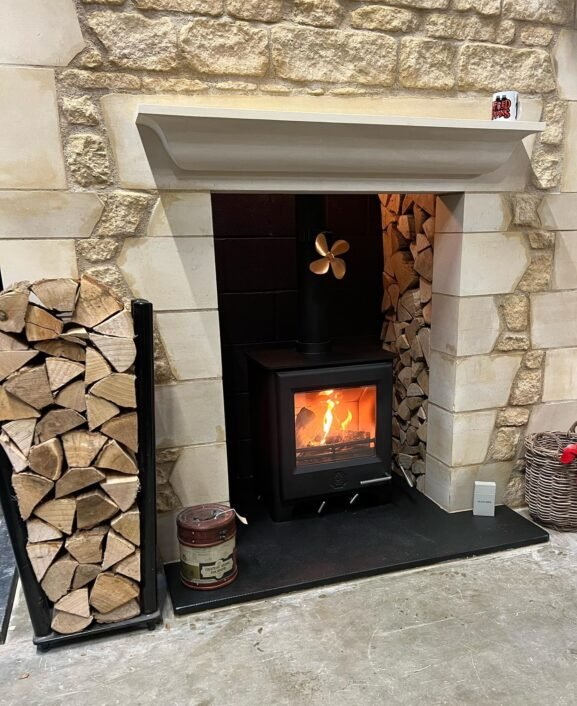Prevent Heat Loss Due to an Uninsulated Chimney: Tips for Winter Efficiency
As winter sets in, many of us rely on our fireplaces to keep our homes cozy. But did you know that an uninsulated chimney could be a major culprit in heat loss? It’s a common oversight that can lead to chilly drafts and skyrocketing energy bills.
When we consider home efficiency, the chimney often gets overlooked. Yet, without proper insulation, it acts like a vacuum, pulling warm air out and letting cold air in. This not only affects our comfort but also our wallets.
In this text, we’ll explore the impact of heat loss through uninsulated chimneys and why addressing this issue is crucial for energy efficiency. By understanding the dynamics at play, we can take steps to ensure our homes remain warm and energy-efficient all season long.
Heat Loss Explained: Tips for Better Energy Efficiency

Uninsulated chimneys can be the sneaky culprits behind heat loss in homes. Imagine cozying up for winter while your chimney plays the reluctant heater, letting precious warmth escape. Oops! In areas, where winters can be particularly icy, addressing this energy waste becomes crucial.
Why Insulate Your Chimney?
- Energy Waste: An uninsulated chimney acts like an escape route for your home’s heat, increasing energy costs.
- Thermal Efficiency: Proper insulation improves chimney performance and retains heat.
- Comfort Issues: A well-insulated chimney helps maintain a consistent indoor temperature.
- Flue Liners: Investing in flue liners can dramatically enhance thermal efficiency.
- Chimney Caps: These prevent drafts and moisture, improving energy conservation.
- Professional Inspection: Reach out to professionals for consultation.
For more information on chimney safety and performance enhancements, check out the National Fire Protection Association. Remember, it’s always best to get professional help—especially in the quirky climate of regions where everything, including chimneys, has its own personality quirks!
Reach out to our team for expert advice and make your chimney part of a snug and efficient winter.
Causes Of Heat Loss In Chimneys
Uninsulated chimneys can be sneaky culprits of heat loss in homes, especially during those chillier months. Let’s uncover why these heat ninjas work their magic and how we can stop them from robbing our cozy warmth. If it feels like winter’s icy fingers are turning your living room into a frozen tundra, reach out to professionals for consultation.
Poor Insulation
Lack of proper insulation is a major cause of heat loss. Without insulation, warm air escapes up and out through the chimney rather than circulating within the home. To visualize, it’s like leaving a window open on a frosty day—brr! This heat escape route results in higher energy bills and reduced thermal efficiency. Insulating chimneys with flue liners and caps can significantly reduce these losses. According to the Chimney Safety Institute of America, professional inspection and upgrades ensure maximum energy conservation.

Inefficient Fireplace Design
Old and inefficient fireplace designs can be heat thieves too. Many traditional open fireplaces send the warm air straight up the chimney rather than into the room, like an all-you-can-eat buffet for the cold air. Modern designs, such as inserts or stoves, improve heat retention. These designs direct more warmth into the home and contribute to better chimney performance. The National Fire Protection Association recommends updating fireplace designs to boost home heating efficiency. Want to escape the chill and keep your heat where it belongs? Contact us for tailored solutions to curb energy waste.
Impact Of An Uninsulated Chimney
Uninsulated chimneys can be more than just a chilly inconvenience in winters. Let’s explore how these heat loss culprits can drain your wallet and affect the environment.
Increased Energy Costs
Uninsulated chimneys lead to skyrocketing energy bills. They act like open windows, letting heat escape and causing furnaces to work overtime. As a result, energy waste escalates significantly for homeowners. Imagine receiving a bill with more zeroes than your morning donut count—not the pleasant surprise anyone wants. Investing in insulation solutions like flue liners or chimney caps boosts thermal efficiency and saves you money in the long run. For a cozy home and snug Santa arrival, keeping your chimney insulated is a smart move. To learn more about energy conservation and reducing costs, reach out to professionals for consultation.
Environmental Effects
Environmental impact grows with uninsulated chimneys. Excessive energy usage from heating systems contributes to global warming and air pollution. Insulating your chimney aids energy conservation and reduces your carbon footprint. It’s an easy step toward a greener planet. Let’s avoid turning our cozy fireside evenings into environmental faux pas! Professional insulation services not only improve chimney performance and comfort but also support sustainable winter heating.
Identifying Heat Loss Symptoms
Uninsulated chimneys can lead to significant heat loss in homes, affecting comfort and energy bills. It’s important to spot symptoms early to tackle the problem effectively. Always remember, reach out to professionals for consultation.
Drafts and Cold Spots
Cold drafts and chilly spots near the chimney are clear signs of heat loss. These areas often result from warm air escaping through gaps and cracks. When it feels like a cold breeze is passing through your living room, it might not just be the ghost of Christmas past. In brisk winters, these drafts can lead to discomfort and higher heating expenses. Investing in chimney insulation solutions enhances thermal efficiency and warmth. If you’re noticing these symptoms, don’t wait for Jack Frost to move in — let us help with reliable solutions.
Soot Accumulation
Excess soot in the chimney indicates poor heat retention and uneven combustion. This can affect chimney performance, further complicating energy conservation efforts. More soot means more cleaning, which isn’t anyone’s idea of winter fun. It can also block proper airflow, forcing your heating systems to work overtime. Regular inspections help manage this issue; our team offers professional services to keep your chimney clean and efficient.
Solutions To Minimize Heat Loss

Dealing with an uninsulated chimney might feel like giving warmth a one-way ticket out of your house. Thankfully, we can explore some reliable insulation solutions to keep that cozy air inside.
Installing Chimney Liners
Chimney liners improve thermal efficiency by providing a barrier against heat loss. They not only prevent energy waste but also enhance chimney performance by keeping the heat where it belongs—in your home! Made from materials like stainless steel and ceramically bonded materials, they reduce comfort issues like cold drafts. It’s vital to consider liners due to the notorious winter chills.
Have a professional handle the installation, though. Trust us, chimney diving isn’t for amateurs! For those curious about liner types and more chimney safety details, reach out to professionals for consultation.
Improving Fireplace Efficiency
Improving fireplace efficiency ensures heat retention and reduces energy waste. Consider upgrading to modern fireplace inserts or stoves; these designs help direct more heat into your room rather than up the chimney. Choosing closed designs over traditional open fireplaces can significantly improve heating during the winter months.
Plus to providing effective heat retention strategies, they can turn any living room gathering into a warmer experience, minus the Arctic blast common with older models. Winters don’t stand a chance!
Collaborate with professionals for installations to maintain safety and optimal performance. Questions about how to make your fireplace the toastiest place in your home? Reach out to professionals for consultation.
Boost Home Comfort and Energy Savings with Chimney Insulation
Addressing heat loss through uninsulated chimneys is essential for enhancing home comfort and energy efficiency. By investing in chimney insulation and modern fireplace solutions, we can significantly reduce energy waste and lower our heating bills. This not only benefits our wallets but also contributes positively to the environment by reducing our carbon footprint. Let’s make our homes cozier and more sustainable this winter by prioritizing chimney efficiency.
Frequently Asked Questions
Why is it important to insulate chimneys?
Insulating chimneys is crucial because it prevents heat loss, especially in cold regions. Without insulation, warm air escapes, leading to increased energy bills and uncomfortable drafts. Proper insulation enhances efficiency, maintains indoor warmth, and contributes to energy conservation.
How does chimney insulation improve energy efficiency?
Chimney insulation acts as a barrier that retains heat within the home, reducing energy waste. By preventing warm air from escaping, it ensures that heating systems work efficiently, leading to consistent indoor temperatures and lower energy costs.
What are the signs of heat loss through a chimney?
Common signs of heat loss through a chimney include cold drafts, chilly spots near the fireplace, and noticeable temperature fluctuations in the house. These symptoms suggest that warm air is escaping, indicating the need for better insulation.
What solutions can help reduce chimney heat loss?
To reduce chimney heat loss, consider installing flue liners, chimney caps, or upgrading to modern fireplace inserts or stoves. These solutions improve thermal efficiency by minimizing gaps and cracks that allow warm air to escape.
How can homeowners address chimney heat loss effectively?
Homeowners should start with a professional inspection to identify specific issues. Based on the evaluation, investing in chimney insulation solutions, such as flue liners or modern fireplace inserts, can enhance thermal efficiency and reduce energy usage.
Are there financial benefits to insulating chimneys?
Yes, insulating chimneys can lead to significant financial savings. By reducing heat loss, energy bills decrease as heating systems operate more efficiently, saving homeowners money in the long run while also reducing their carbon footprint.
What impact does chimney insulation have on the environment?
Chimney insulation helps reduce energy consumption, cutting down on greenhouse gas emissions. By ensuring efficient use of energy resources, it contributes to combating global warming and air pollution, promoting a more sustainable environment.
Is professional installation recommended for chimney insulation solutions?
Yes, professional installation is recommended for chimney insulation solutions like flue liners and modern fireplace systems to ensure accuracy and safety. Experts can tailor strategies to meet specific needs, ensuring optimal performance and energy efficiency.


